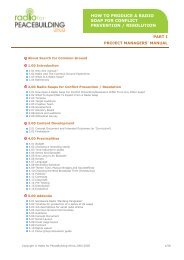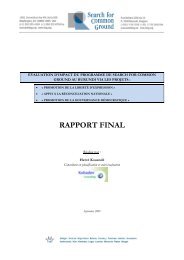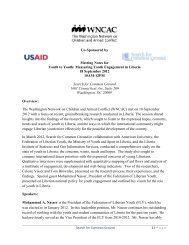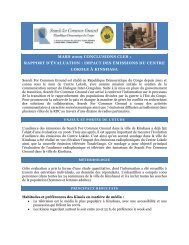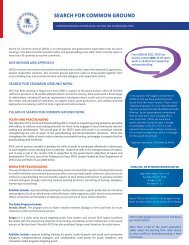The Common Ground Network for Life and Choice Manual
The Common Ground Network for Life and Choice Manual
The Common Ground Network for Life and Choice Manual
Create successful ePaper yourself
Turn your PDF publications into a flip-book with our unique Google optimized e-Paper software.
it is important to stress the significance of this action in the communication.<br />
We also asked people <strong>for</strong> a telephone number <strong>and</strong> made a personal contact in this way to<br />
confirm their underst<strong>and</strong>ing of the purpose <strong>and</strong> nature of the dialogue. During this conversation<br />
we sought other in<strong>for</strong>mation to create a good mix of participants. Aside from pro-choice/pro-life<br />
balance, we advise a degree of parity in the degree of activism, i.e., you do not want all full-time<br />
staff or leaders of advocacy organizations on one side, <strong>and</strong> all "civilians" (people <strong>for</strong> whom<br />
abortion is an extra-curricular concern) on the other. So, we asked about the degree of their<br />
involvement <strong>and</strong> their experience as advocates.<br />
Involving a Facilitator<br />
An experienced facilitator should be chosen to play the crucial function of en<strong>for</strong>cing the<br />
ground rules, directing <strong>and</strong> moving the dialogue along <strong>and</strong> encouraging participation. <strong>The</strong><br />
general role of a dialogue facilitator is explained in Chapter Four. In the online setting, the<br />
facilitator should practice the same behaviors, but simply alter the <strong>for</strong>mat from verbal to written.<br />
Some specific facilitator interventions are included below in "Basic Design."<br />
Setting opening <strong>and</strong> closing dates<br />
Definite dates on which the dialogue will commence <strong>and</strong> end should be set, to insure a<br />
good level of intensity <strong>and</strong> involvement. We found that from four to six weeks works well,<br />
allowing that additional unfacilitated dialogue may continue independently after this time.<br />
Basic Design<br />
Initiating the Dialogue Group<br />
<strong>The</strong> facilitator opens the group by calling <strong>for</strong> a round of introductions, beginning by<br />
introducing him/herself. <strong>The</strong> facilitator also reviews the purpose of the group, clarifies his/her<br />
role <strong>and</strong> sets the start date of the group dialogue. Appendix 6.2 is a sample opening letter.<br />
Dialogue



